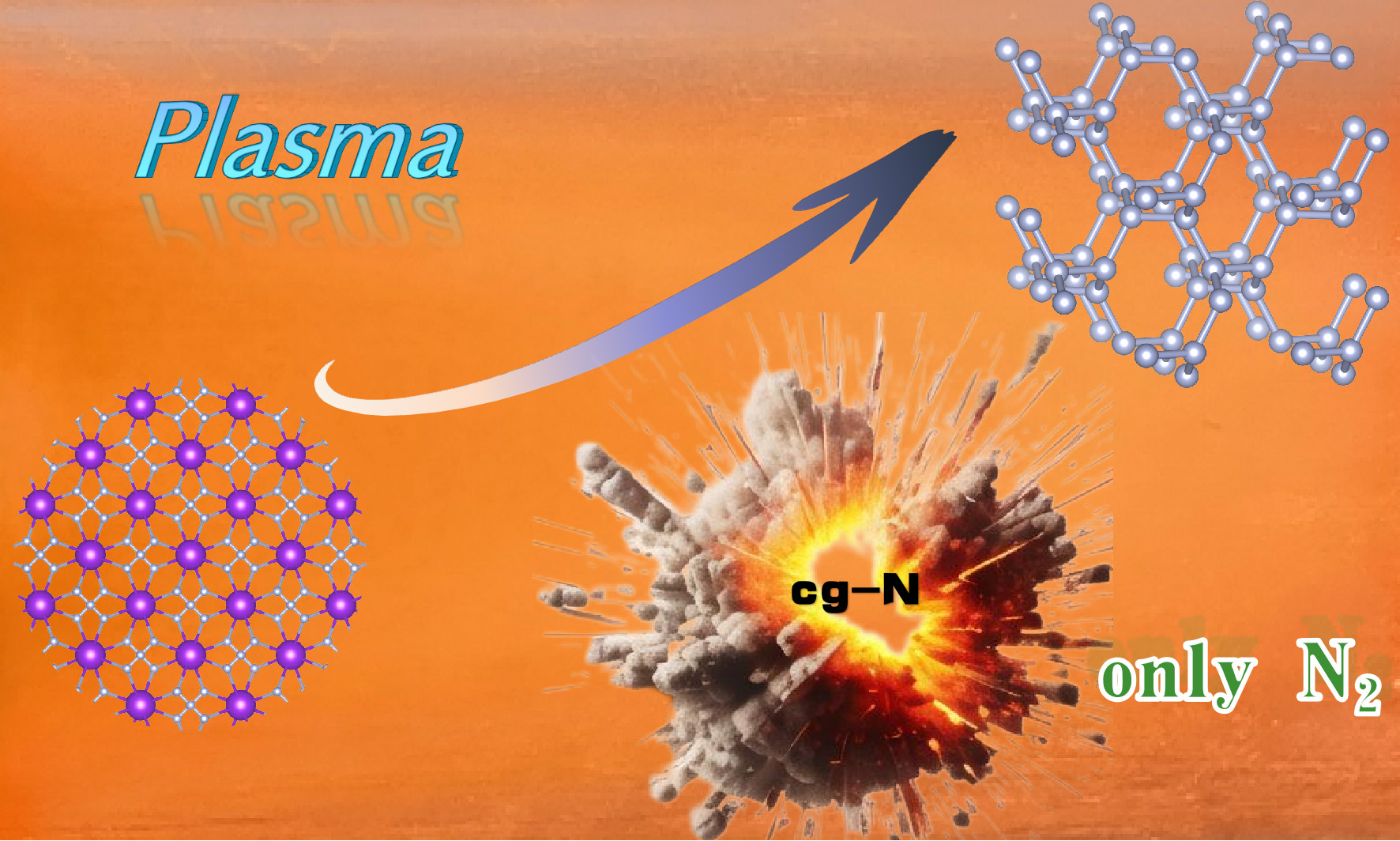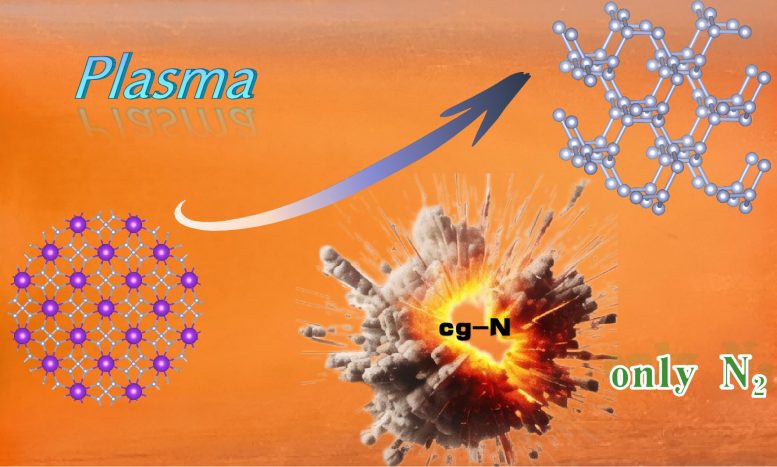

Scientists have synthesized cubic gauche nitrogen (cg-N) at atmospheric pressure, confirming its stability up to 760 K. This development offers a practical approach to producing cg-N, with potential implications for high-energy-density materials.
A research team led by Prof. Xianlong Wang from the Hefei Institutes of Physical Science, part of the Chinese Academy of Sciences, has successfully synthesized cubic gauche nitrogen (cg-N), a high-energy-density material, at atmospheric pressure. This achievement was made possible by treating potassium azide (KN3) through the plasma-enhanced chemical vapor deposition (PECVD) technique.
The research results were published in Science Advances.
Cg-N is a pure nitrogen material consisting of nitrogen atoms bonded by N-N single bonds, resembling the structure of diamond. It has attracted attention because it has a high-energy-density and produces only nitrogen gas when it decomposes. The development of efficient and safe synthesis method under atmospheric pressure is an important issue.
Theoretical Foundations and Surface Stability
Since 2020, the research team has employed first-principles calculations as a theoretical guide to simulate the stability of the cg-N surface under various saturated states, pressures, and temperatures. The results revealed that surface instability led to the cg-N decomposition at low-pressures. They proposed that saturating the surface suspension bonds and transferring the charge could stabilize cg-N up to 750 K at atmospheric pressure.
In this research, choosing KN3 with lower toxicity and explosiveness as a precursor, due to the strong electron transfer capacity of potassium, the team successfully synthesized cg-N using PECVD technology without relying on the carbon nanotube-limiting effect. Thermogravimetric-differential scanning calorimetry (TG-DSC) measurements confirmed that the synthesized cg-N exhibits thermal stability up to 760 K, followed by rapid and intense thermal decomposition.
The study provides an efficient and convenient way to synthesis cg-N at atmospheric pressure, and also new ideas for the development of future high-energy-density materials, according to the team.
Reference: “Free-standing cubic gauche nitrogen stable at 760 K under ambient pressure” by Yuxuan Xu, Guo Chen, Fei Du, Ming Li, Liangfei Wu, Deyuan Yao, Xiaodong Liu, Junfeng Ding, Zhi Zeng, Ruibin Liu, Haiqing Lin and Xianlong Wang, 27 September 2024, Science Advances.
DOI: 10.1126/sciadv.adq5299